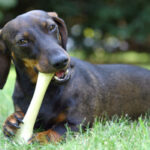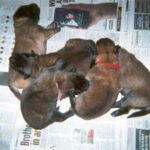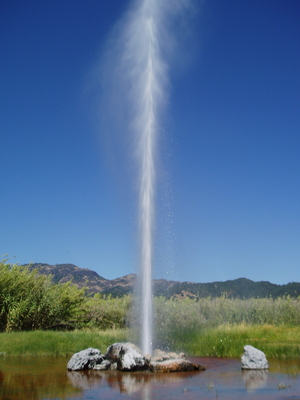Puppies can be expensive. From food to new shots to neutering to those cute little toys you find at Pet Co., your new puppy is chewing a whole through your wallet — both literally and figuratively. He chews anything he can get his hands on and you’re worried that these terrible behaviors are going to continue straight through into doggy adulthood. So what’s a puppy owner to do? Follow these five easy steps to keep your puppy from chewing.
Take a Trip to the Vet
Believe it or not, your puppy may be chewing for more reasons than just because he feels like it. A puppy disease called Pica is common in large litters and involves nausea. When your puppy is feeling sick, he chews on non-edible items to try and keep himself from regurgitating. Although I hope this isn’t the problem, take a trip to your local vet and make sure your puppy is healthy.
Rid Your Home of Dangerous Items
The second step in stopping your puppy from chewing is to rid your house of dangerous items. Your puppy is trying to explore his world through the sense of taste much as young children do, and even though it makes you angry, you don’t want him chewing through an electrical cord. While your puppy is still in the chewing stage, get everything off the floor that could be potentially harmful.
Set Up Neutral Territory
Your next step in stopping your puppy from chewing should be to set up neutral territory. When you aren’t home or when you’re busy and can’t keep an eye on your puppy, he or she should be contained in a room where there isn’t anything valuable or dangerous to chew on. The kitchen is a good place — you can purchase a metal gate enclosure or simply close your doors if your home as them, or you can use the laundry room or the bathroom — whatever works for you.
Give Your Puppy Something Else to Chew On
This might seem like a backwards way to stop your puppy from chewing, but it’s actually healthy for your puppy to chew. It keeps his teeth sharp and healthy and gives him an outlet for nervous energy. Purchase a few chew toys at your local pet store; you can even find chew toys that help to clean your puppy’s teeth or to solve bad breath issues. Whatever the case, when you aren’t playing with your puppy, give him something correct to chew on.
Use the Word “No”
As easy as it sounds, it works like a charm. Now that you’ve taken preventative measures toward keeping your puppy from chewing on incorrect items, you’ll have to combine the word “No!” with a deterrent. Some puppy owners will clap their hands loudly together or will tap the puppy on the nose when they say “No!” This tells the puppy that he or she is doing something wrong. You don’t want to spank your puppy hard or anything else that will hurt him, but you do want to send the message that his behavior is unacceptable.
One to Go On
As a final note, some puppies will display aggressive behavior early on, particularly when it comes to “possession”. If your puppy is chewing on something that isn’t meant for chewing, you should take it away from him. If he displays aggressive behavior — such as growling or snapping — I would recommend finding a professional to help with your training. These behaviors are rarely unlearned without the help of a professional.





